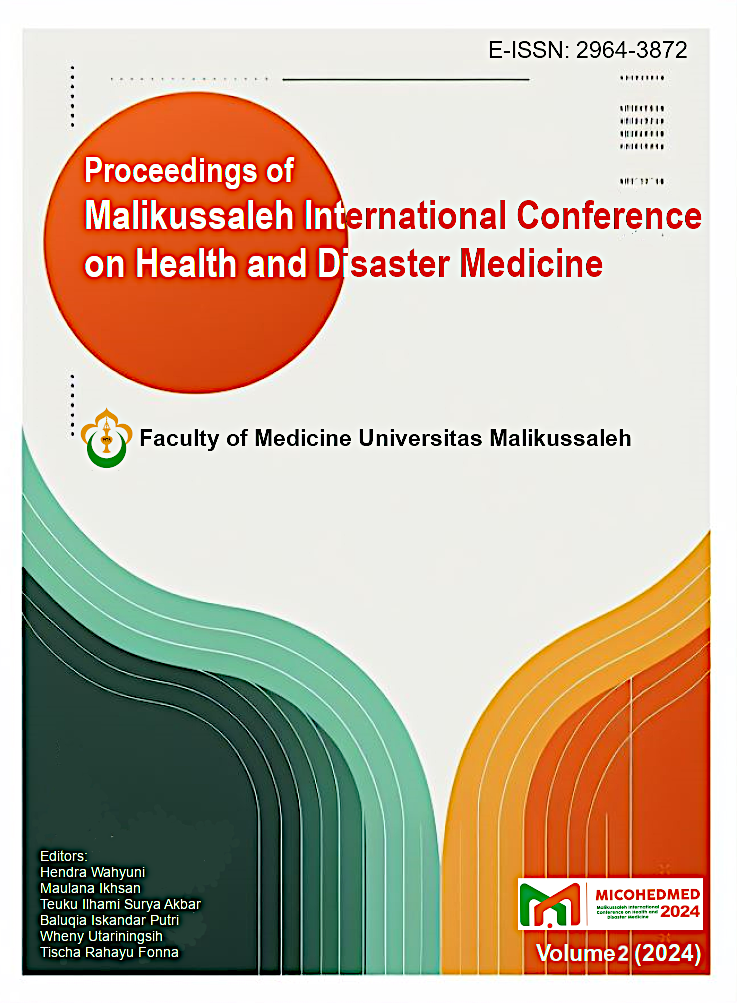The Potential of Platelet-Rich Plasma in Promoting Axonal Regeneration: A Narrative Review
DOI:
https://doi.org/10.29103/micohedmed.v2i.1197Keywords:
Platelet-rich plasma, PRP, platelet biology, axonal regenerationAbstract
Platelet-rich plasma (PRP) is an autologous blood product obtained by centrifugation. PRP is characterized by a high concentration of growth factors, which are known to promote tissue healing, influence angiogenesis, and exhibit immunomodulatory effects without causing significant adverse reactions. Consequently, PRP has been used in various medical specialties, including neurology, in recent years. This review aimed to provide an overview of the current evidence on the use of PRP to promote axonal regeneration. An extensive literature search was conducted across several databases, including PubMed and Google Scholar, using keywords such as platelet-rich plasma (PRP), platelet-concentrated plasma, platelet-rich growth factors, and axonal regeneration. A detailed analysis of the relevant studies was performed, and the data were meticulously extracted and analyzed. Studies have indicated that PRP may have promising potential to facilitate nerve regeneration. Specifically, PRP has been shown to be effective in protecting nerves, preventing neuronal apoptosis, and stimulating vascular and axonal regeneration. Furthermore, PRP regulates inflammatory responses in the microenvironment, which may further contribute to its potential benefits in nerve regeneration. Understanding the biology, mechanism of action, classification of PRP, and its role in axonal regeneration is crucial for clinicians to gain a complete understanding of this therapeutic approach and appropriately interpret available data on PRP.
References
1. DeLong J, Russell R, Mazzocca A. Platelet-Rich Plasma: The PAW Classification System. Arthroscopy. 2012;28:998–1009.
2. Malanga GA, Goldin M. PRP: review of the current evidence for musculoskeletal conditions. Curr Phys Med Rehabil Rep. 2014;2(1):1–15.
3. Alves R, Grimalt R. A Review of Platelet-Rich Plasma: History, Biology, Mechanism of Action, and Classification. Skin Appendage Disord. 2018;4:18–24.
4. Le ADK, Enweze L, DeBaun MR, Dragoo JL. Platelet-Rich Plasma. Vol. 38, Clinics in Sports Medicine. W.B. Saunders; 2019. p. 17–44.
5. Everts PA, Knape JT, Weibrich G, PAM Schönberger J, Hoffmann J, Overdevest EP, et al. Platelet-Rich Plasma and Platelet Gel: A Review. J Extra Corpor Technol. 2006;38:174–87.
6. Everts P, Onishi K, Jayaram P, Lana JF, Mautner K. Platelet-rich plasma: New performance understandings and therapeutic considerations in 2020. International Journal of Molecular Sciences. MDPI AG; 2020;21: 1–36.
7. Nikolidakis D, Jansen JA. The Biology of Platelet-Rich Plasma and Its Application in Oral Surgery: Literature Review. Tissue Eng Part B Rev [Internet]. 2008 Jul 6;14(3):249–58. Available from: https://doi.org/10.1089/ten.teb.2008.0062
8. Yu W, Wang J, Yin J. Platelet-rich plasma: a promising product for treatment of peripheral nerve regeneration after nerve injury. International Journal of Neuroscience. 2011;121(4):176–80.
9. Wang S, Liu X, Wang Y. Evaluation of platelet-rich plasma therapy for peripheral nerve regeneration: a critical review of literature. Front Bioeng Biotechnol. 2022;10:808248.
10. Sánchez M, Garate A, Delgado D, Padilla S. Platelet-rich plasma, an adjuvant biological therapy to assist peripheral nerve repair. Neural Regen Res. 2017;12(1):47–52.
11. Boswell SG, Cole BJ, Sundman EA, Karas V, Fortier LA. Platelet-rich plasma: a milieu of bioactive factors. Arthroscopy: The journal of arthroscopic & related surgery. 2012;28(3):429–39.
12. Narai H, Nagano I, Ilieva H, Shiote M, Nagata T, Hayashi T, et al. Prevention of spinal motor neuron death by insulin‐like growth factor‐1 associating with the signal transduction systems in SODG93A transgenic mice. J Neurosci Res. 2005;82(4):452–7.
13. Chahla J, Cinque M, Piuzzi N, Mannava S, Geeslin A, Murray I, et al. A Call for Standardization in Platelet-Rich Plasma Preparation Protocols and Composition Reporting A Systematic Review of the Clinical Orthopaedic Literature. J Bone Joint Surg. 2017;99.
14. Foster TE, Puskas BL, Mandelbaum BR, Gerhardt MB, Rodeo SA. Platelet-Rich Plasma: From Basic Science to Clinical Applications. Am J Sports Med. 2009;37(11):2259–72.
15. Marx RE. Platelet-Rich Plasma (PRP): What Is PRP and What Is Not PRP? Implant Dent. 2001;10(4).
16. Ehrenfest DMD, Rasmusson L, Albrektsson T. Classification of platelet concentrates: from pure platelet-rich plasma (P-PRP) to leucocyte-and platelet-rich fibrin (L-PRF). Trends Biotechnol. 2009;27(3):158–67.
17. Martínez-Martínez A, Ruiz-Santiago F, García-Espinosa J. Platelet-rich plasma: Myth or reality? Radiología (English Edition). 2018;60(6):465–75.
18. Rodrigues M, Kosaric N, Bonham CA, Gurtner GC. Wound healing: a cellular perspective. Physiol Rev. 2019;99(1):665–706.
19. Scherer SS, Tobalem M, Vigato E, Heit Y, Modarressi A, Hinz B, et al. Nonactivated versus Thrombin-Activated Platelets on Wound Healing and Fibroblast-to-Myofibroblast Differentiation In Vivo and In Vitro. Plast Reconstr Surg. 2012;129(1).
20. Zheng C, Zhu Q, Liu X, Huang X, He C, Jiang L, et al. Effect of platelet‐rich plasma (PRP) concentration on proliferation, neurotrophic function and migration of Schwann cells in vitro. J Tissue Eng Regen Med. 2016;10(5):428–36.
21. Stolle M, Schulze J, Roemer A, Lenarz T, Durisin M, Warnecke A. Human plasma rich in growth factors improves survival and neurite outgrowth of spiral ganglion neurons in vitro. Tissue Eng Part A. 2018;24(5–6):493–501.
22. Wang Z, Mudalal M, Sun Y, Liu Y, Wang J, Wang Y, et al. The Effects of Leukocyte-Platelet Rich Fibrin (L-PRF) on Suppression of the Expressions of the Pro-Inflammatory Cytokines, and Proliferation of Schwann Cell, and Neurotrophic Factors. Sci Rep. 2020;10(1):2421.
23. Nishio H, Saita Y, Kobayashi Y, Takaku T, Fukusato S, Uchino S, et al. Platelet-rich plasma promotes recruitment of macrophages in the process of tendon healing. Regen Ther. 2020 Jun 1;14:262–70.
24. Caillaud M, Richard L, Vallat JM, Alexis D, Billet F. Peripheral nerve regeneration and intraneural revascularization. Neural Regen Res. 2019 Jan 1;14:24.
25. Lu J, Yan X, Sun X, Shen X, Yin H, Wang C, et al. Synergistic effects of dual-presenting VEGF-and BDNF-mimetic peptide epitopes from self-assembling peptide hydrogels on peripheral nerve regeneration. Nanoscale. 2019;11(42):19943–58.
26. Cho HH, Jang S, Lee SC, Jeong HS, Park JS, Han JY, et al. Effect of neural-induced mesenchymal stem cells and platelet-rich plasma on facial nerve regeneration in an acute nerve injury model. Laryngoscope. 2010;120(5):907–13.
27. Firat C, Aytekin A, Durak M, Geyik Y, Erbaturo S, Dogan M, et al. Comparison of the effects of PRP and hyaluronic acid in promoting peripheral nerve regeneration An experimental study with vascular conduit model in rats’. Ann Ital Chir. 2016 Jul 1;87:362–74.
28. Wu CC, Wu YN, Ho HO, Chen KC, Sheu MT, Chiang HS. The Neuroprotective Effect of Platelet-rich Plasma on Erectile Function in Bilateral Cavernous Nerve Injury Rat Model. J Sex Med. 2012;9(11):2838–48.
29. Wu YN, Liao CH, Chen KC, Chiang HS. Dual effect of chitosan activated platelet rich plasma (cPRP) improved erectile function after cavernous nerve injury. Journal of the Formosan Medical Association. 2022;121(1):14–24.
30. Ding XG, Li SW, Zheng XM, Hu LQ, Hu WL, Luo Y. The effect of platelet-rich plasma on cavernous nerve regeneration in a rat model. Asian J Androl. 2009;11:215–21.
31. Pandunugrahadi M, Irianto KA, Sindrawati O. The Optimal Timing of Platelet‐Rich Plasma (PRP) Injection for Nerve Lesion Recovery: A Preliminary Study. Int J Biomater. 2022;2022(1):9601547.
32. Kokkalas N, Kokotis P, Diamantopoulou K, Galanos A, Lelovas P, Papachristou DJ, et al. Platelet-rich plasma and mesenchymal stem cells local infiltration promote functional recovery and histological repair of experimentally transected sciatic nerves in rats. Cureus. 2020;12(5).
33. Huang ML, Zhai Z, Chen ZX, Yang XN, Qi ZL. Platelet-rich fibrin membrane nerve guidance conduit: a potentially promising method for peripheral nerve injuries. Chin Med J (Engl). 2020;133(08):999–1001.
34. Ikumi A, Hara Y, Yoshioka T, Kanamori A, Yamazaki M. Effect of local administration of platelet‐rich plasma (PRP) on peripheral nerve regeneration: An experimental study in the rabbit model. Microsurgery. 2018;38(3):300–9.
Downloads
Published
How to Cite
Issue
Section
License
Copyright (c) 2024 Meutia Maulina, Yuziani, Rizka Sofia

This work is licensed under a Creative Commons Attribution-ShareAlike 4.0 International License.
n order for Proceedings of Malikussaleh International Conference on Health and Disaster Medicine (MICOHEDMED) to publish and disseminate research articles, we need non-exclusive publishing rights (transfered from author(s) to publisher). This is determined by a publishing agreement between the Author(s) and Proceedings of Malikussaleh International Conference on Health and Disaster Medicine (MICOHEDMED). This agreement deals with the transfer or license of the copyright of publishing to Proceedings of Malikussaleh International Conference on Health and Disaster Medicine (MICOHEDMED), while Authors still retain significant rights to use and share their own published articles. Proceedings of Malikussaleh International Conference on Health and Disaster Medicine (MICOHEDMED) supports the need for authors to share, disseminate and maximize the impact of their research and these rights, in any databases.
As a proceeding Author, you have rights for a large range of uses of your article, including use by your employing institute or company. These Author rights can be exercised without the need to obtain specific permission. Authors publishing in Proceedings of Malikussaleh International Conference on Health and Disaster Medicine (MICOHEDMED) proceedings have wide rights to use their works for teaching and scholarly purposes without needing to seek permission, including:
- use for classroom teaching by Author or Author's institution and presentation at a meeting or conference and distributing copies to attendees;
- use for internal training by author's company;
- distribution to colleagues for their reseearch use;
- use in a subsequent compilation of the author's works;
- inclusion in a thesis or dissertation;
- reuse of portions or extracts from the article in other works (with full acknowledgement of final article);
- preparation of derivative works (other than commercial purposes) (with full acknowledgement of final article);
- voluntary posting on open web sites operated by author or author’s institution for scholarly purposes,
(but it should follow the open access license of Creative Common CC-by-SA License).
Authors/Readers/Third Parties can read, print and download, redistribute or republish the article (e.g. display in a repository), translate the article, download for text and data mining purposes, reuse portions or extracts from the article in other works, sell or re-use for commercial purposes, remix, transform, or build upon the material, they must distribute their contributions under the same license as the original Creative Commons Attribution-ShareAlike (CC BY-SA).




